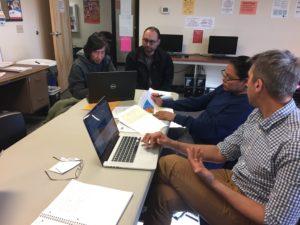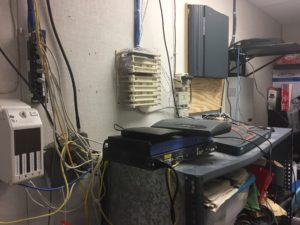So far, we’ve facilitated three of the six broadband toolkit site assessments in Arizona as part of Internet2’s “Toward Gigabit Libraries” pilot program (I wrote about the pilot program in an earlier post). The first two were facilitated by James Werle of Internet2 and a network engineer from Arizona State University and Northern Arizona University.
Though the toolkit was designed for small, rural library staff who do not have any IT support, it was critical to have the IT staff at the table to weigh in on tangible opportunities for improvement. While we certainly were able to increase library staff understanding of broadband, we often departed from the toolkit and had more generalized talks about E-rate and library programming made possible by technology and broadband. Additionally, a strength of the toolkit is that it serves as a backdrop for larger conversations with the tribal IT departments about the library’s role as a community anchor and how increased broadband capacity can help the library provide digital services to improve quality of life in the community.
Two of the libraries have very supportive IT staff who regularly help the libraries in their network and technology management, and it’s likely that the library staff will not have to do much of the upgrades themselves. Both of these libraries receive service through the tribal network, which is partitioned to each building. I was surprised to hear that the library buildings actually receive a very small portion of what is available (e.g. 5 Mbps) to other buildings on the reservation. I hope that the conversations between the library staff and the IT department can lead to increased services down the line.


